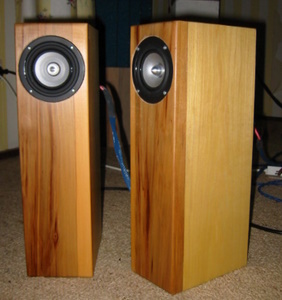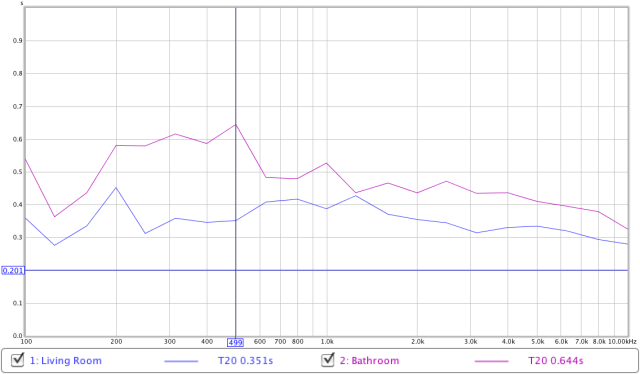
A friend of mine asked on an online forum about a new gym (for exercise classes) that has serious acoustical problems.
the whole place rings like a bell … the “stage” where the instructor works is beset with reflected sound … the delays and sound reflections are such that the beats in any rhythm are seriously out of step with each other at different points in the room…. the instructors are having a really hard time staying on beat …
My take on it is that the reverberation time is simply too high. While there are other issues, like speaker placement relative to the instructor, and possibly an echo off the rear wall, my feeling is that distributed absorption would be the most cost-effective way to improve the situation. It doesn’t have to be thick, as this is not a hifi listening room and absorption down to low frequencies doesn’t seem necessary.
While it’s a bit of a drive, I’d like to go and measure the gym and see what it’s like now, and again after any treatment that is done. Which then led to the thought that it would be good to put together a portable system for measuring room acoustics. So I’ve added to my portable “kit” (currently consisting of my laptop, Edirol UA-25EX USB interface, and M30 microphone) a small chip amplifier and a full-range loudspeaker using a 3″ driver. The actual response of the speaker is not all that important, as the goal is to measure reverberation time and identify significant resonances. This is the speaker:
To try this out, I tried a sweep in my living room, and obtained (using Room Eq Wizard) an RT60 measurement of around 300-400 ms. This surprised me, as my living room is a litle more “live” than I would like. So I carried everything up to the bathroom and ran a sweep in there. The measurement results do show that the bathroom is comparatively “live” compared to the living room, with a nominal RT60 up to around 80% higher, depending on frequency:
 I wouldn’t rely on these as absolute numbers, but as a comparative tool this seems useful so far. I’ve also realized that from now on I should use both speakers of the pair, pointed in opposite directions; it won’t be a dodecahedral speaker, but it will do for now.
I wouldn’t rely on these as absolute numbers, but as a comparative tool this seems useful so far. I’ve also realized that from now on I should use both speakers of the pair, pointed in opposite directions; it won’t be a dodecahedral speaker, but it will do for now.